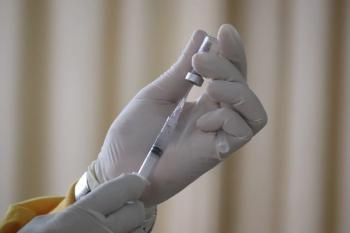
Carcinogenic HPV Type Has Highest Rate of Incidence and Lowest Rate of Clearance
When it comes to HPV infection in men who have sex with men, the type of virus they contract has real implications for their future cancer risk.
In assessing the population of men who have sex with men (MSM) for the occurrence of anal human papillomavirus (HPV), does it matter which subtype of HPV they have, how frequently it appears, and how long it lasts? It does, say authors of a new
A team of researchers based at Public Health Service Amsterdam in the Netherlands examined data collected between 2010 and 2015 from 713 MSM without HIV who were assessed twice a year for a period of about 4.5 years (the median amount). The men had conducted anal self-swabs at the start of being followed and every 6 months thereafter. DNA was extracted from the samples, tested for the presence of HPV, and—if positive—subjected to HPV genotyping. The subjects also filled out questionnaires about their sexual behavior and symptoms at each biannual visit.
The scientists discovered that, overall, the subtype HPV16 had the highest rate of incidence (defined as a positive HPV test following a previous negative test result for the same HPV type) in MSM and the lowest rate of clearance (defined as a negative test result following a previous positive test for the same HPV type) out of the 7 different HPV subtypes looked at (16, 18, 31, 33, 45, 52, 58). The median length of time it took to clear an HPV16 infection was 10 months, compared with 4 months to clear an HPV18 infection. The team also conducted a sensitivity analysis that required 2 consecutively positive or negative tests to confirm incidence or clearance, respectively. Under this stricter analysis as well as the original single-test definition of incidence or clearance, HPV 16 was more likely than the other 6 subtypes of HPV to result in persistent infection.
The Dutch researchers discovered that their results were in line with those of
“To our knowledge, this is the first study to estimate time until incident anal hrHPV infection by hrHPV-type among HIV-negative MSM,” the authors wrote in the discussion section of their report. “Time until hrHPV infection is an important marker for infection pressure and related HPV-disease risk in this population. In line with the incidence rates and transition intensities observed herein, we confirm that anal HPV16 infection is acquired more rapidly than other hrHPV types.”
The authors also noted that while earlier studies confirmed the lower clearance rate of HPV16, those studies followed subjects for up to 2 years only in contrast to this study’s 4-or 5-year follow-up period.
In this study, having more than 100 sexual partners over a lifetime was positively correlated with HPV16 acquisition. When partners in just the last 6 months were accounted for, however, there was no association.
“[T]he recency of sexual exposure does not seem to be linked to HPV acquisition,” the authors wrote. “One hypothesis could be reactivation of latent infections.”
They also noted that condom use was not significantly linked to transitioning from an uninfected to an infected state, which they attributed to MSM possibly being in exclusive relationships without the chance of new infections.
Ms. Saloman is a health writer with more than 20 years of experience working for both consumer-and physician-focused publications. She is a graduate of Brandeis University and the Medill School of Journalism at Northwestern University. She lives in New Jersey with her family.
Newsletter
Stay ahead of emerging infectious disease threats with expert insights and breaking research. Subscribe now to get updates delivered straight to your inbox.















































































































































































































































































